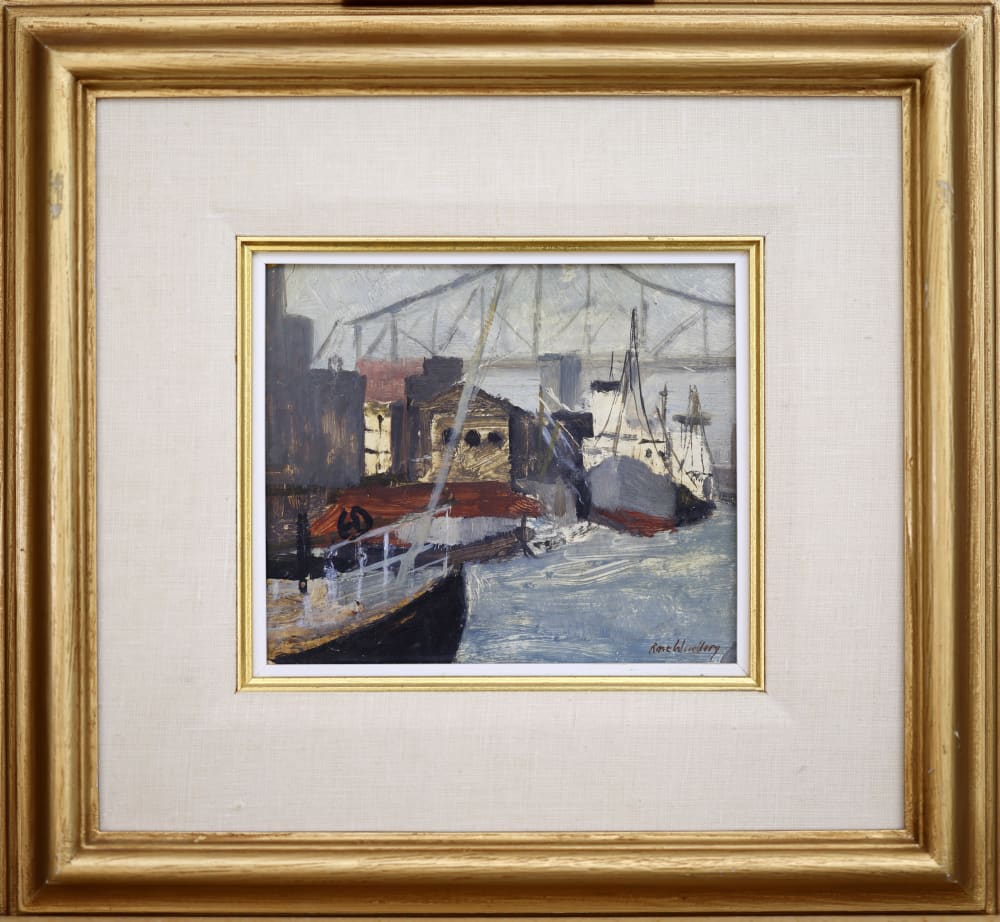Rose Wiselberg Canadian, 1908-1992
Further images
"Montreal Harbour" by Rose Wiselberg, created circa 1945, is an evocative portrayal of industrial life by the waterfront. This scene is composed with a limited but striking palette, capturing the essence of the harbor with broad, confident brushstrokes that convey the busy atmosphere of the port during the mid-20th century.
The painting foregrounds a ship, its deck rendered in bold strokes of red, creating a stark contrast against the cool tones of the water. The ship's intricate rigging and the silhouettes of the workers aboard are depicted with quick, decisive lines, suggesting the bustling activity that defines the essence of harbor life.
In the background, the skeletal structure of a bridge or crane looms, its geometric form a symbol of the era's engineering feats and the growth of infrastructure. The industrial backdrop is made up of warehouses and buildings, their windows mere suggestions, reflecting the early evening light or the onset of dawn.
The harbor water captures the reflections from the structures and vessels, its surface a tapestry of fluid, intermingling colors that dance with the movement of the tides. Wiselberg has adeptly captured the play of light on the water with whites and blues, adding a dynamic quality to the composition.
Overall, "Montreal Harbour" is a powerful interpretation of the maritime gateway of Montreal, highlighting the city's role as a crucial nexus of commerce and industry. It offers a snapshot of history, reflecting the post-war economic boom and the gritty reality of the working waterfront. Wiselberg's work is both a visual chronicle and an artistic tribute to the working class and the industrial landscape of her time.






